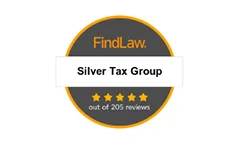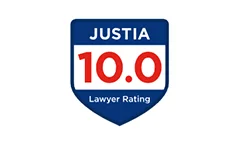What’s The IRS Priority Guidance Plan?

The tax space is filled with constantly changing policies and requirements, making the Internal Revenue Service (IRS) Priority Guidance Plan essential to keeping you on track. You don’t want to get into a situation where you’re unaware of some of the tax guidelines, after all, and knowing about the latest regulations could even ensure you’re legally compliant with specific things, too.
The recommendations evolve over time, meaning using the current year’s priority guidance plan is your best bet to being able to address the tax issues that affect you. Here’s everything you need to know about the IRS Priority Guidance Plan, including what it is, what it covers, and how it can help you get the most from your tax return.
What is the IRS Guidance Priority List?

To understand the Priority Guidance Plan, it helps to first dig into the IRS Guidance Priority List. These are the facts to keep in mind:
- The Guidance Priority List is created each year by the IRS and the United States Department of Treasury’s Office of Tax Policy.
- It is used to identify the tax issues that need to be addressed through regulations, notices, revenue procedures, and other published “administrative guidance.”
- The list provides resources to help taxpayers and tax administrators.
- It includes virtually everything addressed in Congress related to revenue, tax code, or other factors that will impact individuals or businesses when filing their taxes.
- The IRS then decides the best way to provide guidance on those items.
- This ensures no one has to read through 2,600 pages of tax code to find out what applies to them.
IRS tax codes are issued annually, making the Priority Guidance List a great way to highlight the most important aspects. Publishing such guidance can help clear up questions and identify what has to be done, when, and by whom.
What is an IRS Priority Guidance Plan?

A Guidance Plan is created to make sense of the projects on the IRS Guidance Priority List. In many instances, the IRS and U.S. Treasury will release a priority Guidance Plan for the year, then provide updates each quarter. Here’s what to know:
- The Guidance Plan identifies all the items the two departments need to work on.
- This includes regulations that can affect individuals, small businesses, and corporations.
- The Guidance Plan can impact the way business taxes are filed, how retirement income is calculated, and more.
- Understanding the guidance plan is critical to ensuring compliance.
- It can otherwise lead to tax penalties, the IRS seizure of property, and other issues.
Quarterly updates to the tax plan ensure that people are aware of new executive orders, how the implementation of a congressional act is going, and more. Guidance may come on any number of tax issues such as revocations, notices, the simplifying of amendments, proposed regulations, and final regulations that adopt the proposed ones.
Information to Know in the Priority Guidance Plan

A Priority Guidance Plan can be overwhelming, but there are often details you can skip. You do not need to know about a proposed regulation until it has been formally adopted, for example, and must learn how to read the plan to quickly determine what areas are specific to your needs.
There are “parts” of the Priority Guidance Plan, each of which focuses on a tax code area. Each contains a numbered list of all that is planned by the U.S. Department of Treasury and IRS. Here are some must-know details you’ll want to familiarize yourself with in the 2020-2021 Plan.
Implementation of TCJA
The Tax Cuts and Jobs Act focuses on a tax rate reform that modifies how much a person pays in taxes based on income. Some of the guidance for the amendments and regulations focus on:
- Low-income housing credit average income test
- Deductibility of certain expenses
- Excess deferred income taxes
- How TCJA affects small businesses
Burden Reductions
The IRS and U.S. Department of Treasury have worked to reduce the tax burden for individuals and companies. Some of the guidance offered in this area includes:
- Compliance monitoring
- Charitable contributions
- Bond reissuance
- Momentary ownership of stock by S Corporations
Taxpayer First Act Guidance
The Taxpayer First Act was signed to redesign the IRS to strengthen taxpayer rights and help it become more taxpayer friendly. Guidance offered in this area includes:
- Payment of taxes by debit and credit cards
- Misdirected tax refund deposits
- Use of electronic signatures
General Guidance
In many instances, the plan includes general guidance broken out into numerous categories to ensure people know of the latest changes to Tax Code. Some of the aspects involved include:
- Corporations and their shareholders
- Employee benefits
- Financial institutions and products
- General tax issues
- Gifts and estates and trusts
- Insurance companies and products
The resources are often in the form of news releases, guides, or videos, such as that available to discuss the training strategy for the Taxpayer First Act.
Questions about the IRS Priority Guidance Plan?

Downloading the current year’s IRS Priority Guidance Plan is just the first step. You’ll want to explore the full plan for the current year to determine any other information that may pertain to you. An expert tax professional can help you understand the Tax Code more effectively and ensure you’re not missing anything crucial to your tax returns. Be sure to highlight the areas that concern you to determine what type of guidance is available.
When you have questions about the Guidance Plan or need help with tax filings, the team at Silver Tax Group is here to help. Our tax experts are always ready to answer questions and offer guidance about IRS processes, procedures, forms, and myriad other topics. Contact us today to get started.





Free Consultation 24/7
Chad Silver
Attorney

Silver Tax Group Locations


777 South Flagler Drive
Suite 800 – West Tower
West Palm Beach FL 33401

4005 Guadalupe St
Suite C
Austin, TX 78751


